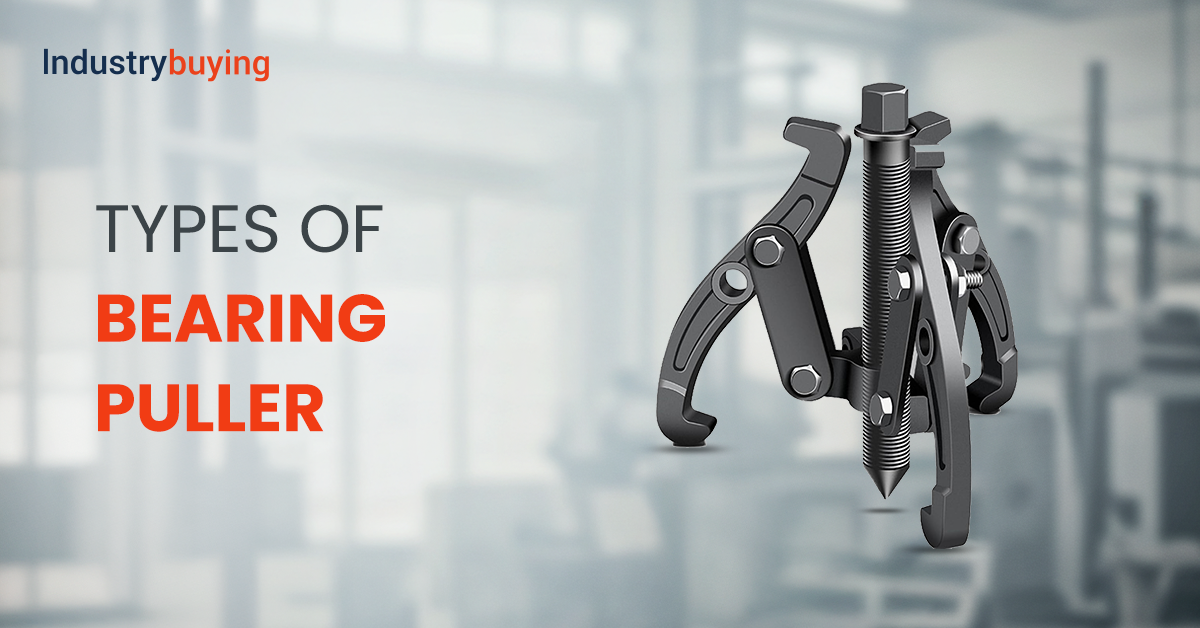Types of Bearing Pullers

Last Updated on April 14, 2025
Introduction
Bearing removal and safety remain crucial within all maintenance and repair activities involving machinery systems. Bearing pullers are particular tools that help remove bearings while safeguarding both structures and adjoining components from any damage. Knowing the different types of bearing pullers and their specific applications is important for both professionals and handymen.
What Are Bearing Pullers?
Bearing pullers are mechanical tools built to pull out bearings, gears, or pulleys from shafts or housings. These systems work carefully and apply force to remove tightly attached parts during the process. The correct choice of bearing puller serves two main benefits: it speeds up maintenance operations and defends against equipment damage that leads to ultimate failure.
How Do Bearing Pullers Work?
The execution of the bearing puller operation involves several key steps:
- Selection: The choice of puller equipment requires selection based on the measurement scale of the bearing while meeting its operational specifications.
- Positioning: Pullers must be placed around or within the bearing to ensure a secure grip.
- Force Application: Controlled force is applied by the puller using manual, hydraulic, or pneumatic power to extract bearings from their original position.
Using this defined system reduces the risk of harm to both bearing and machinery components while maintaining their respective structural validity.
Different Types of Bearing Pullers
Bearing pullers include different designs that are built to deal with particular applications.
- Two-Jaw Bearing Pullers: These pullers have two adjustable arms, which make them appropriate for both inside and outside pulling operations on bearings. They are perfect for small to medium-sized bearings in automotive and mechanical applications.
- Three-Jaw Bearing Pullers: Three-Jaw Bearing Pullers use three arms as a design feature, which offers increased stability and distributes pulling force evenly to hold bigger bearings and firm pulling situations.
- Internal Bearing Pullers: Internal pullers serve to remove bearings from inaccessible blind holes found in housings with limited external accessibility. They expand internally to grip the bearing from inside, facilitating extraction without rear access.
- Reversible Bearing Pullers: The adjustable-toe design of reversible pullers makes them useful for carrying out internal as well as external bearing extraction tasks.
- Hydraulic Bearing Pullers: Using hydraulic force, these pullers remove large or stiff bearings efficiently for industrial environments where mechanical assistance remains crucial.
Bearing Puller Attachments & Accessories
Various attachments and accessories for the puller allow users to improve its functionality when facing different scenarios:
- Bearing Separator Plates: Many users need to separate bearings when there is limited space behind it. Allowing for even force application during removal.
- Slide Hammers: Internal pullers use slide hammers to deliver impact force, which helps with extracting tough bearings.
- Extension Rods: These rods extend the reach to the puller, allowing access to bearings that are found at deeper or recessed positions.
- Hydraulic Pumps: External hydraulic pumps drive the operation of hydraulic pullers through their pressure functions.
How to Choose the Right Bearing Puller
Multiple factors determine the selection process of appropriate bearing pullers.
- Bearing Size and Type: Ensure the puller is compatible with the specific dimensions and design of the bearing.
- Accessibility: You need to evaluate whether the bearing is easily accessible or located in a small space, which will influence the selection between external or internal pullers.
- Force Requirements: Determine the force requirements to make the right selection. Bearings that are big in size or have an extensive service duration should be removed with hydraulic pullers.
- Application Context: Perfect application depends on the specific industry type and field use since certain pullers function better with automotive work or industrial machinery.
Conclusion
The efficient maintenance of machinery demands a detailed understanding of different bearing pullers along with their applications for safety purposes. Technical professionals who select proper tools and accessories ensure that bearings, together with the supported machinery, operate at their best while maintaining extended service lives.
Frequently Asked Questions
1. How many types of bearing pullers are there in general?
There are five main bearing pullers, which include two-jaw pullers. three-jaw pullers, together with internal (or blind) pullers, along with hydraulic pullers and reversible pullers. The different types of tools are designed to solve particular removal requirements.
2. Which type of bearing puller is best for automotive repairs?
Automotive repair specialists use three-jaw pullers primarily since these tools provide security along with uniform distribution, which enables proper removal of vehicle bearings as well as gears and pulleys.
3. What size is an SKF-type bearing puller?
The bearing pullers available from SKF suit different application requirements through their numerous size options. The required size of SKF-type bearing pullers depends on both their model types and planned applications. Reference the SKF product catalogue or specifications for selecting the bearing puller size that suits your particular requirements.
For a comprehensive selection of bearing pullers and related tools, visit Industrybuying, your trusted partner in quality industrial equipment.